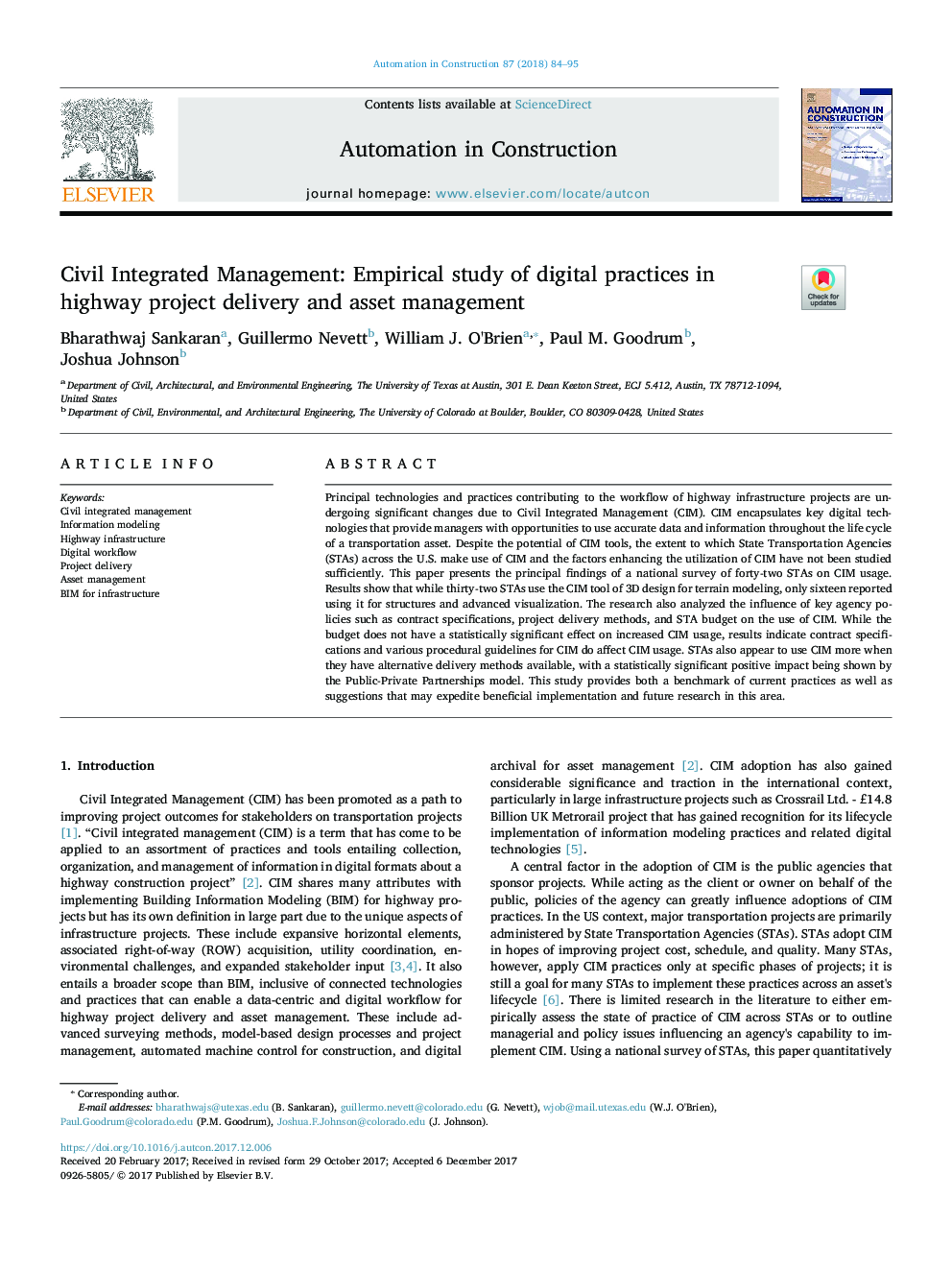| Article ID | Journal | Published Year | Pages | File Type |
|---|---|---|---|---|
| 6695856 | Automation in Construction | 2018 | 12 Pages |
Abstract
Principal technologies and practices contributing to the workflow of highway infrastructure projects are undergoing significant changes due to Civil Integrated Management (CIM). CIM encapsulates key digital technologies that provide managers with opportunities to use accurate data and information throughout the life cycle of a transportation asset. Despite the potential of CIM tools, the extent to which State Transportation Agencies (STAs) across the U.S. make use of CIM and the factors enhancing the utilization of CIM have not been studied sufficiently. This paper presents the principal findings of a national survey of forty-two STAs on CIM usage. Results show that while thirty-two STAs use the CIM tool of 3D design for terrain modeling, only sixteen reported using it for structures and advanced visualization. The research also analyzed the influence of key agency policies such as contract specifications, project delivery methods, and STA budget on the use of CIM. While the budget does not have a statistically significant effect on increased CIM usage, results indicate contract specifications and various procedural guidelines for CIM do affect CIM usage. STAs also appear to use CIM more when they have alternative delivery methods available, with a statistically significant positive impact being shown by the Public-Private Partnerships model. This study provides both a benchmark of current practices as well as suggestions that may expedite beneficial implementation and future research in this area.
Related Topics
Physical Sciences and Engineering
Engineering
Civil and Structural Engineering
Authors
Bharathwaj Sankaran, Guillermo Nevett, William J. O'Brien, Paul M. Goodrum, Joshua Johnson,
